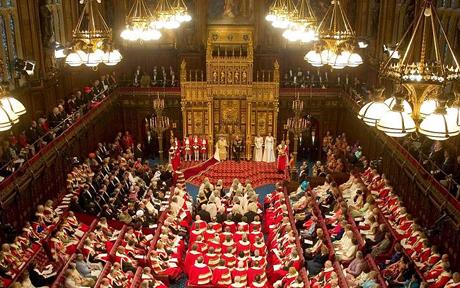House of Lords London

The House of Lords and House of Commons are two pillars of British political system. For many years, House of Lords was considered a senior of the two Houses, but powers of the Lords were significantly reduced after 1911 and 1949 Acts. Law Lords were introduced in 1876 under the Appellate Jurisdiction Act, and it became the Supreme court in the United Kingdom (which has now been changed by the Constitutional Reform Act 2005). The power of House of Lords can be gauged in a way that any bill that is passed by the House of Commons can be reversed with amendments by the House of Lords.
House of the Lords website
Contact Number: +44 20 7219 3000
Instructions
-
1
History
House of Lords has an eventful history starting from the 11th century. The powers of the Parliament suffered a decline during the civil war of late 15th century, also called the War of the Roses. A major conflict arose in 1909, when Liberal Chancellor of the Exchequer prepared a budget, and it was rejected by the Lords. Finally, the dice was rolled to curb the powers that the Lords enjoyed and in the 1911 Parliament Act, it was decided that the Lords cannot repeatedly reject a bill. The bill can only be rejected 2 times in a year, and then it goes for the Royal Assent. In 1958, it was decided that women can also be a member of the Lords. In 1997, Labor party was elected and came up with a manifesto to bring key reforms in the House of Lords. All the House’s judicial functions were separated from the Parliament after the Constitutional Reform Act 2005, ending the role of Lord Chancellor as head of the judiciary. For the first time in 2006, there was an election in the House for a Lord Speaker. In 2009, all the judicial function of the House was shifted to the newly established Supreme Court of UK. In 2011, the deputy Prime Minister presented a draft bill on House of Lords Reforms, stating that maximum 300 members can sit in the House of Lords. The bill is further referred to the joint committee of both Houses till the last update. -
2
Organization Structure
Presently, House of Lords has 700 members; out of which 26 are Archbishops and Bishops and 92 members are hereditary peers. The organizational structure is given below:
Leader of the House
^
Senior Bishops
^
Lay Peers -
3
Working of the House of Lords
The working of the House of Lords is quite different from the House of Commons. It is an independent forum that diligently looks after the works of House of Commons. In addition, legislating and keeping a check on the executive's work is included in their tasks.
-
4
Members in the House of Lords
Members of the House of Lords are experts and professionals in their fields, bringing the experience and knowledge they gained from different occupations to the House. Most of them are extremely successful in their businesses - whether it is related to culture, sports and academia or health, science and public service. Many of them are still active in their professions and bring this fruitful knowledge to their roles of probing matters related to public interest that affect the citizens of United Kingdom. -
5
House of Lords member’s conduct
In order to perform Parliamentary duties more efficiently and effectively, a set code of conduct is defined to the members of the House of Lords for their guidance. All the members are answerable to the House. They need to be honest and accountable to the public and uphold public confidence in them. In addition, members have to disclose all their financial and relevant non-financial interests to the Register of Lord’s Interests. -
6
Operational Hours
The operational hours of House of Lords are generally from 2:30 pm on Mondays and Tuesdays while Wednesdays' hours start from 3 pm and Thursdays' start at 11 am. On Fridays, a session can start at 10. -
7
Location
House of Lords, Westminster, London, SW1A 0PW, United Kingdom. -
8
How to Get There
By tube:
Westminster Tube station is the nearest tube station to the House of Lords. It is 0.2 miles away and 2 minutes walk. Move west on Bridge St/A302 towards Canon Row. Then take a left to Parliament Square/St Margaret St/A302/A3212. You will see the House of Lords on your left side. View map
By bus:
The nearest bus station is Westminster, Abingdon Street (N-bound). It is a 2 minutes walk to the House of Lords. Move north on Abingdon St/A3212. You will find your destination on the right side.







